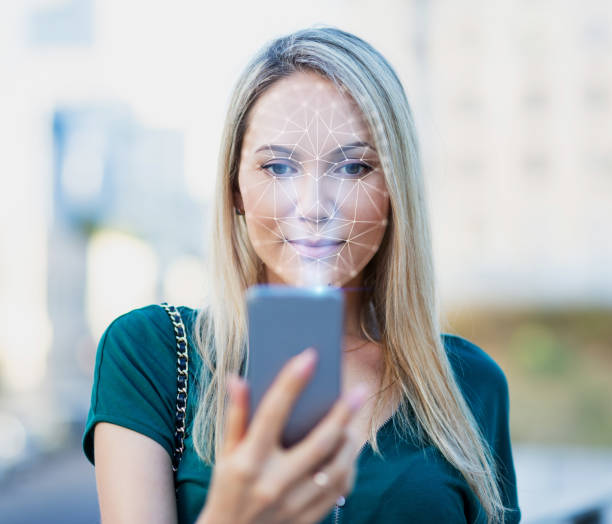In 2022, approximately 13.5 million individuals in the United States encountered identity theft. The worldwide rate of identity forgery has also been increasing rapidly. Moreover, banks are considered the most extensive industry that experiences the most cases of identity theft. When people arrive at the bank intending to open an account under false information, they disguise themselves as someone else. The organization requires a robust verification tool that authenticates the individual’s identity.
Machine learning facial recognition is the optimal one-stop solution for verifying individuals’ identities for swift bank onboarding. Financial institutions are consistently at risk of identity fraud and money laundering. Therefore, banks and other financial organizations strengthen their Know Your Customer (KYC) approaches and assure the legality of genuine customers.
This blog will delve into the insight of facial recognition technology, its use case in the customer onboarding procedure, and how it prevents identity forgery.
The Need for Facial Recognition Scanner in Banking
A facial recognition scanner is a marvel of technology that can match human faces from digital images and videos with an extensive database of faces. This technology solely works on machine learning principles, such as deep learning, with the cognitive framework of convolutional neural networks (CNN).
However, facial recognition scanners are widely used in different industries, such as financial institutions, to protect organizations’ interests and prevent identity forgery. Bank onboarding requires an enhanced KYC solution to verify customers’ identities. Thus, facial recognition technology is most advantageous for this benefit. Traditional bank onboarding is an acceptable procedure for KYC and is definitively obligatory for its regulations. There are generally two types of facial recognition scanners:
- Biometric face recognition
- AI face recognition
Advantages of AI Face Recognition in Swift Bank Onboarding
AI face recognition is instrumental for swift onboarding in banks. It scans and verifies the human face against the database to authenticate the customer’s identity. On the contrary, artificial intelligence blended with machine learning provides an efficient solution concerning speed and accuracy. However, security in the banking systems is crucial for efficient operations to prevent financial fraud.
Machine learning facial recognition is beyond identity verification that concedes AML and KYC compliances. It facilitates customer onboarding and equips financial institutions with a reliable solution. Moreover, AI face recognition enhances the security measures against fraud and identity theft to prevent organizations. The other benefit must be that it also helps improve the customer experience as people rely on technology more than subordinates.
The Functionality of Biometric Face Recognition
Biometrics refers to an individual’s unique physical attributes and physical features that distinguish one person from another. These characteristics confine various details of the human face, such as eye structure, fingerprints, etc. In the case of biometric face recognition, the process is initiated by detecting the face within an image or video. Subsequently, specialized scanners analyze facial attributes, including eyes, eyebrows, forehead, ears, lips, and skin tone, and the spatial relationship between features such as the nose bridge and forehead and the overall facial contour. This data is then transmitted to a system that operates algorithms and converts the facial image into a digital code that enables the identification of the individual.
Implementing Face Recognition Solutions in Banking
The emerging advancement in facial recognition technology and its potential application in the banking system has revolutionized the financial world. Facial recognition solutions provide an innovative opportunity to advance in the banking field and extend security measures. The solution providers offer the banks robust KYC and AML compliance and enhance their due diligence process. Nonetheless, the solutions can be implemented while customers are opening the account and their onboarding. It will also designate the ongoing process and review the verification process continuously.
Face Recognition Services For Robust Compliance In Banks
Like many other KYC solutions and services, machine learning facial recognition is the optimal solution for verifying identities. Facial recognition services are evolving in financial institutions to authenticate customers’ identities and protect their investments. However, facial recognition can be widely used in physical services to identify and authenticate individuals instead of signatures, passwords, and PINs. Facial recognition services ensure compliance with data protection regulations and provide maximum security during onboarding.
Moreover, regarding the ethical considerations surrounding using biometric data and these services, mitigating the risks in managing finances and onboarding new users must be challenging.
Final Words
Machine learning facial recognition is a powerful tool that has optimized the swift bank onboarding process. The AI-driven facial recognition technology mitigates the threats of identity forgery and financial deception, but it also applies robust compliance to money laundering. The technological marvel of facial recognition scanners leverages the banks with enhanced protection against economic losses. Moreover, it integrates the verification process and safeguards customers’ interests with seamless onboarding. AI facial recognition improves security standards and advances the prevalent banking venture. As financial organizations enfold innovation, machine learning facial recognition emerges as a pivotal instrument, fostering trust, efficiency, and compliance in an ever-evolving financial landscape.




